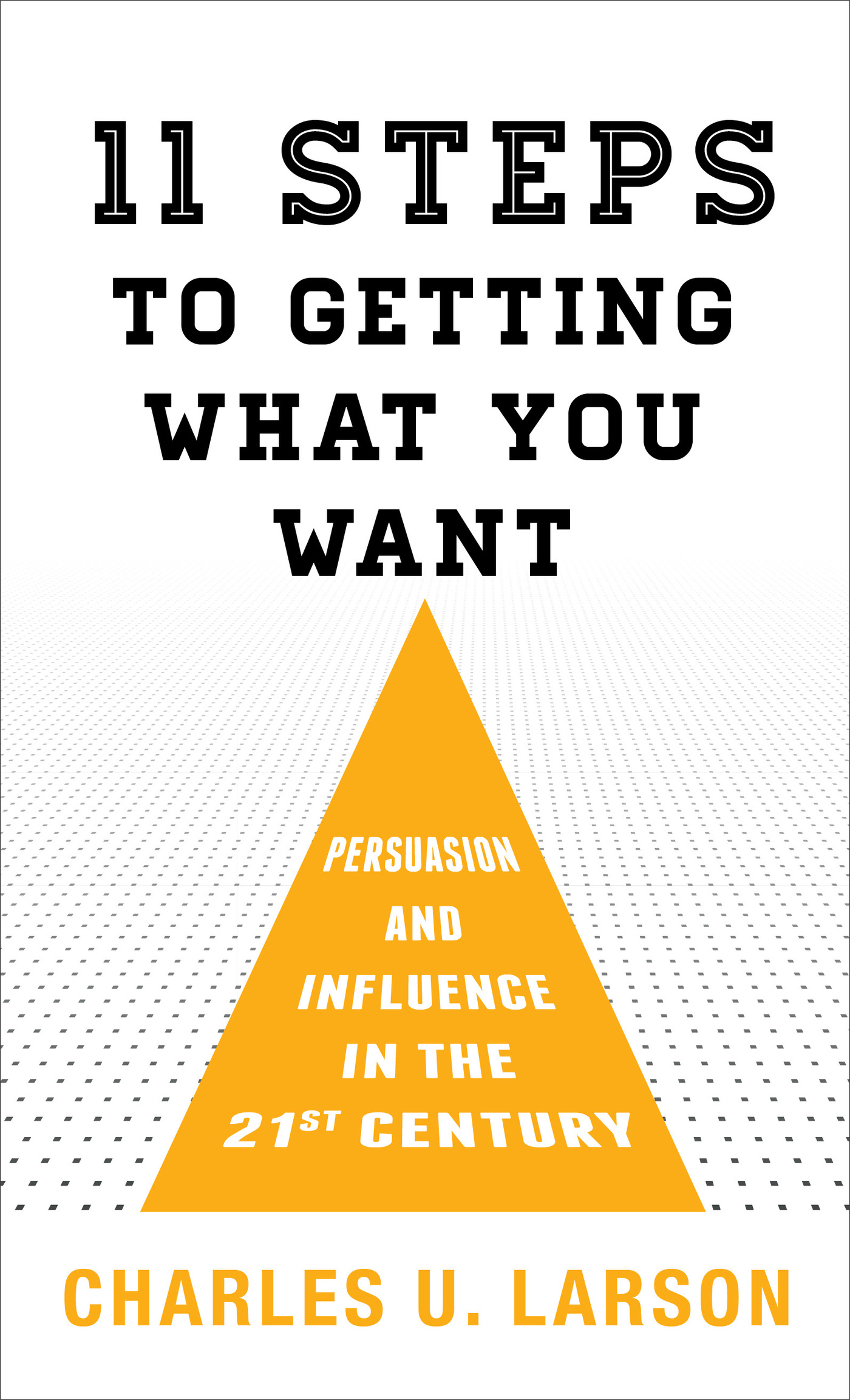11 Steps to Getting What You Want
11 Steps to Getting What You Want
Persuasion and Influence
in the 21st Century
Charles U. Larson
ROWMAN & LITTLEFIELD
Lanham Boulder New York London
Published by Rowman & Littlefield
An imprint of The Rowman & Littlefield Publishing Group, Inc.
4501 Forbes Boulevard, Suite 200, Lanham, Maryland 20706
www.rowman.com
6 Tinworth Street, London SE11 5AL, United Kingdom
Copyright 2019 by The Rowman & Littlefield Publishing Group, Inc.
All rights reserved. No part of this book may be reproduced in any form or by any electronic or mechanical means, including information storage and retrieval systems, without written permission from the publisher, except by a reviewer who may quote passages in a review.
British Library Cataloguing in Publication Information Available
Library of Congress Cataloging-in-Publication Data
Names: Larson, Charles U.
Title: 11 steps to getting what you want : Persuasion and influence in the 21st century / Charles U. Larson
Description: Lanham : Rowman & Littlefield [2018] /Includes bibliographical references and index.
Identifiers: LCCN 2018041036 (print) / LCCN 2018041984 (ebook) / ISBN 9781538118146 (electronic) / ISBN9781538118139 (cloth : alk. paper)
Subjects: LCSH: Persuasion (Psychology) / Influence (Psychology) / Success.
Classification: LCC BF637.P4 (ebook) / LCC BF637.P4 L357 2018 (print) / DDC 153.8/52--dc23
LC record available at https://lccn.loc.gov/2018041036
 TM The paper used in this publication meets the minimum requirements of American National Standard for Information Sciences Permanence of Paper for Printed Library Materials, ANSI/NISO Z39.48-1992.
TM The paper used in this publication meets the minimum requirements of American National Standard for Information Sciences Permanence of Paper for Printed Library Materials, ANSI/NISO Z39.48-1992.
Printed in the United States of America
To Mary, without whom...
Introduction
Perhaps you chose Eleven Steps to Getting What You Want: Persuasion and Influence in the 21st Century because of its implied assertion to be able to help you get what you want. If so, youve made an excellent choice because it is targeted at persons who are interested in reaching their objectives in an orderly manner by using some of the proven techniques and/or tactics of successful persuasion and influence. Among those techniques is the making of a good first impression on prospects and/or other audiences and conducting in-depth audience analysis using a variety of research approaches which are discussed in detail in the book. Also included is an examination of the principle of reciprocity and the means to establish it with others by relying in part on high credibility, social proof, reasoning, evidence, and other forms of proof as well as ones own credibility, the building of which is also discussed.
A brief review of how to keep groups of prospects on track and moving toward ones objective is also included together with an in-depth consideration of the motivations of people who are faced with attractive proposals and persuasive offers. Since most persuasion occurs over time and is not the result of a single message or effort, Ive included a discussion of campaigns for product types, brands, candidates, and worthy causes, to name a few.
Finally, I give several important ways to move ones prospect and/or audience to action and the ethics of persuasion and influence followed by ideas for marketing ones skills of persuading and influencing others. Each chapter includes a listing of take aways that one should be able to accomplish after reading that chapter by using some of the proven techniques or tactics of successful persuasion and influence. These techniques include making good first impressions on prospects and other audiences. They also include researching those prospects and/or audiences, and using reasoning and evidence to persuade them to accept ones proposals and/or offers by using high sources that have great social credibility.
Chapter 1
Establishing Ones Persuasive Objectives, Strategies,
and Tactics
Introduction
Each of us wants to be successful at persuading and influencing othersindividuals and/or groupsin order to get what we want. A good way to think of it is that each of the twelve chapters in this book is devoted to a separate Strategy to be used to achieve that successful outcome. In order to help you prepare to use these strategies, I also include sample/example scripts as models for you as you prepare to persuade and influence. Sometimes they might be entire conversations, as is the case in chapter 2 where a salesperson is trying to persuade a prospect to use a new form of advertising. In other cases, these scripts may be only a paragraph, a sentence, or even just a phrase that will move the persuasive process to a successful outcome. Use these models as starting points for your own persuasive challenges whether they are at work, in your community, in your family, in organizations to which you belong, with a supervisor, or elsewhere.
The purpose of this initial chapter of Eleven Steps to Getting What You Want: Persuasion and Influence in the 21st Century is to give you an initial plan to get organized for persuading and influencing othersindividuals and/or groups. As the title of this chapter suggests, three steps are critical. They are (1) Establishing an Objective. (2) Devising or identifying a Strategy or Strategies that has/have proven to succeed in persuading/influencing others. (3) Implementing the strategy/strategies by using specific and proven Tactics that have also proven successful in the past.
I have outlined and explained this three-step procedure using four brief examplesa military example; a retail business example; an organizational example; and a political example. In most chapters throughout this book, I have tried to provide typical scripts or example dialogues that you can use as models for your own persuasive and influential challenges. As noted above, sometimes they are extended presentations between a persuader and the target receiver(s). In other instances, they may be just a few or even one sentence. And sometimes, the example script could just be a short phrase. Whatever the case, feel free to adapt these scripts to best fit your own persuasion and/or influential situation and needs (e.g., a sales call, an attempt to recruit a volunteer, an attempt to prompt a donation, etc.).
Persuasion is a crucial part of every persons life, but few of us have studied persuasion in depth, and yet it impacts our economic, family, interpersonal, professional, political, and even our social and community lives. It is almost always preceded by having a degree of influence over those we hope to persuade. The overall goal here is to explain and demonstrate eleven ways (or tactics) to gain such influence, and as a result to successfully persuade others to change their behavior in some way. Perhaps you aim to change their purchase behavior, like buying a different brand of a product, or maybe you want to change their voting behavior or their level of donating to a worthy cause. Whatever your objective, you will have to employ some level of influence over these other persons, and then youll need to use that influence to get them to follow your persuasive advice.
A Military Example
In military battles, there must be an overall Objective or a general goal like Reduce or defeat the enemys air, armored, and fuel resources. Second, there is/are a Strategy or Strategies for accomplishing that/those Objective(s). Strategies are usually something more specific and usually state a general action that needs to be taken, such as Cut off their sources of supply or Destroy their means of communication. Finally, a Tactic or Tactics, which is/are usually much more specific like air strikes on airfields, fuel supplies, runways, and the destruction of roads, bridges, and other bottlenecks by drones.
Next page
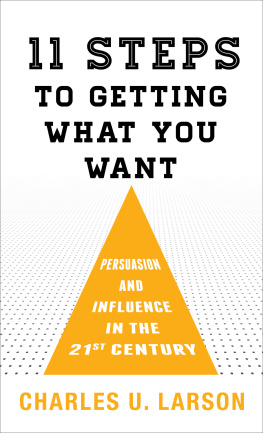

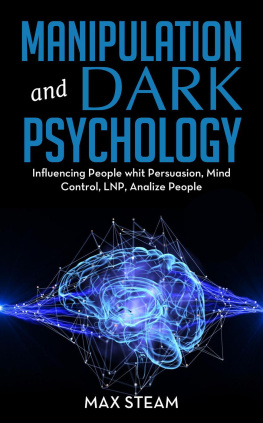


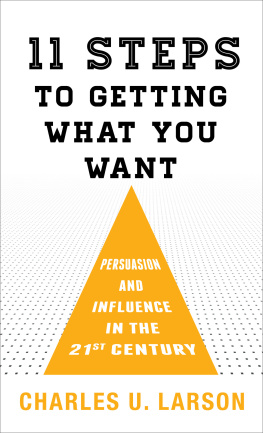

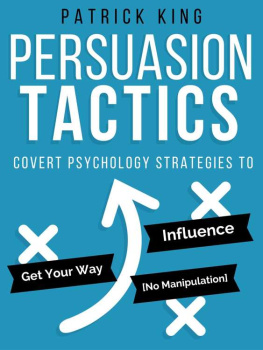
 TM The paper used in this publication meets the minimum requirements of American National Standard for Information Sciences Permanence of Paper for Printed Library Materials, ANSI/NISO Z39.48-1992.
TM The paper used in this publication meets the minimum requirements of American National Standard for Information Sciences Permanence of Paper for Printed Library Materials, ANSI/NISO Z39.48-1992.